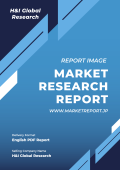| 【英語タイトル】Astaxanthin Market - Growth, Trends, Covid-19 Impact, and Forecasts (2023 - 2028)
|
 | ・商品コード:MOR23AP230
・発行会社(調査会社):Mordor Intelligence
・発行日:2023年1月23日
・ページ数:80
・レポート言語:英語
・レポート形式:PDF
・納品方法:Eメール(受注後2-3営業日)
・調査対象地域:アメリカ、カナダ、メキシコ、スペイン、イギリス、ドイツ、フランス、イタリア、ロシア、中国、日本、インド、オーストラリア、ブラジル、アルゼンチン、南アフリカ、サウジアラビア
・産業分野:化学
|
◆販売価格オプション
(消費税別)
※販売価格オプションの説明
※お支払金額:換算金額(日本円)+消費税
※納期:即日〜2営業日(3日以上かかる場合は別途表記又はご連絡)
※お支払方法:納品日+5日以内に請求書を発行・送付(請求書発行日より2ヶ月以内に銀行振込、振込先:三菱UFJ銀行/H&Iグローバルリサーチ株式会社、支払期限と方法は調整可能)
|
❖ レポートの概要 ❖
Mordor Intelligence社の本調査レポートでは、世界のアスタキサンチン市場規模が、予測期間中(2023年〜2028年)に年平均7.8%で成長すると予想しています。本レポートは、アスタキサンチンの世界市場について調べ、イントロダクション、調査手法、エグゼクティブサマリー、市場動向、ソース別(ヘマトコッカス・プルビアリス微細藻類、ファフィア酵母、オキアミ、その他)分析、用途別(栄養補助食品、動物飼料、養殖、その他)分析、地域別(アメリカ、カナダ、メキシコ、スペイン、イギリス、ドイツ、フランス、イタリア、ロシア、中国、日本、インド、オーストラリア、ブラジル、アルゼンチン、南アフリカ、サウジアラビア)分析、競争状況、市場機会・将来の動向、新型コロナウイルス感染症の影響など、以下の構成でまとめています。また、Beijing Ginko Group (BGG)、Fuji Chemical Industries Co. Ltd、Cyanotech Corporation、Koninklijke DSM NV、BASF SE、Divi's Laboratories Ltd.、ENEOS Holdings、Inc.、Biogenic Co.、Ltd.、Otsuka Holdings Co. Ltd、Alga Technologies Ltdなどの企業情報が含まれています。
・イントロダクション
・調査手法
・エグゼクティブサマリー
・市場動向
・世界のアスタキサンチン市場規模:ソース別
- ヘマトコッカス・プルビアリス微細藻類の市場規模
- ファフィア酵母の市場規模
- オキアミの市場規模
- その他の市場規模
・世界のアスタキサンチン市場規模:用途別
- 栄養補助食品における市場規模
- 動物飼料における市場規模
- 養殖における市場規模
- その他における市場規模
・世界のアスタキサンチン市場規模:地域別
- 北米のアスタキサンチン市場規模
アメリカのアスタキサンチン市場規模
カナダのアスタキサンチン市場規模
メキシコのアスタキサンチン市場規模
…
- ヨーロッパのアスタキサンチン市場規模
イギリスのアスタキサンチン市場規模
フランスのアスタキサンチン市場規模
イタリアのアスタキサンチン市場規模
…
- アジア太平洋のアスタキサンチン市場規模
中国のアスタキサンチン市場規模
インドのアスタキサンチン市場規模
日本のアスタキサンチン市場規模
…
- 南米/中東のアスタキサンチン市場規模
ブラジルのアスタキサンチン市場規模
アルゼンチンのアスタキサンチン市場規模
南アフリカのアスタキサンチン市場規模
…
- その他地域のアスタキサンチン市場規模
・競争状況
・市場機会・将来の動向
・新型コロナウイルス感染症の影響 |
The global astaxanthin market is projected to register a CAGR of 7.8% during the forecast period (2023 – 2028).
The COVID-19 pandemic has had a significant impact on the astaxanthin market as the crisis has highlighted the significance of safe, healthy, and nutritive eating habits among consumers across the globe. A growing number of health-conscious individuals are more inclined towards natural food coloring agents with lesser adverse effects, as compared to other chemical products, which is an important driver estimated to boost the market growth.
The demand for astaxanthin is expected to increase, due to its multiple applications in pharmaceutical, nutraceuticals, and feed industries, among others. Also, the unique color and properties associated with astaxanthin have led to its increased use in commercial aquacultures, food coloring, and others.
Moreover, the increasing adoption of nutrition-rich products is driving the nutraceutical industry at a significant rate. Hence, the demand for astaxanthin-based nutritional products is increasing across the globe. The increasing adoption of novel technologies to boost the production of astaxanthin is anticipated to propel growth over the forecast period. For instance, in 2022, ALGAMO produces photo-bioreactors and micro-modules to create astaxanthin while minimizing water waste and saving electricity.
Astaxanthin Market Trends
Growing Demand from Food Industry Set to Boost Market Growth
The consistent growth in the demand for astaxanthin particularly from the food industry is expected to boost the growth of the astaxanthin market during the forecast period. In the past few decades, astaxanthin is increasingly used as a food additive, owing to health benefits, including anti-inflammatory effects, improved immunity, and prevention of cerebrovascular and cardiovascular diseases, among others. Over the past decade, several studies have revealed that astaxanthin can play an important role in preventing photoaging, improving sleep, minimizing obesity, protecting the vocal cord, combating depression, and increasing sperm motility, among others.
Asia Pacific Holds A Significant Share
The Asia Pacific is observed to provide great opportunities for astaxanthin players, due to its following attributes- the presence of highly proactive consumers, with respect to personal wellness, and a large aging population, leading to several opportunities for healthy-aging ingredients and rapidly changing market conditions. In the Asia-Pacific region, India and China are considered to be potential markets, in terms of astaxanthin production, due to their large population. Moreover, rapid urbanization, high consumer disposable income levels, and increasing awareness about natural products are anticipated to propel the market in this region. The investments made by several global astaxanthin companies to increase their presence and reach in the region. For instance, the Icelandic-based astaxanthin ingredient and supplements producer Algalif (Reykjanesbaer), introduced its new IceCaps astaxanthin softness and its current Icelandic Harvest brand of finished astaxanthin dietary supplements in the Asia-Pacific countries.
Astaxanthin Market Competitor Analysis
The global astaxanthin market has many players and is highly competitive. The market is dominated by key global players; however, there is a significant presence of regional players. Leading manufacturers in the astaxanthin market focus to leverage opportunities posed by emerging markets of Asia-Pacific, like China and India, to expand their revenue base. The key brands are embarking on expansions, mergers and acquisitions, and new product development as some of their key strategies to enhance growth through investing, consolidating, and optimizing their offerings, respectively. Major players in the market are AstaReal Holdings Co. Ltd, KeyNatura, and BGG (Beijing Ginko Group), among others.
Additional Benefits:
- The market estimate (ME) sheet in Excel format
- 3 months of analyst support
1 INTRODUCTION
1.1 Study Assumptions and Market Definition
1.2 Scope of the Study
2 RESEARCH METHODOLOGY
3 EXECUTIVE SUMMARY
4 MARKET DYNAMICS
4.1 Market Drivers
4.2 Market Restraints
4.3 Porter’s Five Forces Analysis
4.3.1 Threat of New Entrants
4.3.2 Bargaining Power of Buyers/Consumers
4.3.3 Bargaining Power of Suppliers
4.3.4 Threat of Substitute Products
4.3.5 Intensity of Competitive Rivalry
5 MARKET SEGMENTATION
5.1 By Source
5.1.1 Haematococcus Pluvialis Microalgae
5.1.2 Phaffia Yeast
5.1.3 Krill
5.1.4 Others
5.2 By Application
5.2.1 Dietary Supplement
5.2.2 Animal Feed
5.2.3 Aquaculture
5.2.4 Others
5.3 Geography
5.3.1 North America
5.3.1.1 United States
5.3.1.2 Canada
5.3.1.3 Mexico
5.3.1.4 Rest of North America
5.3.2 Europe
5.3.2.1 Spain
5.3.2.2 United Kingdom
5.3.2.3 Germany
5.3.2.4 France
5.3.2.5 Italy
5.3.2.6 Russia
5.3.2.7 Rest of Europe
5.3.3 Asia-Pacific
5.3.3.1 China
5.3.3.2 Japan
5.3.3.3 India
5.3.3.4 Australia
5.3.3.5 Rest of Asia-Pacific
5.3.4 South America
5.3.4.1 Brazil
5.3.4.2 Argentina
5.3.4.3 Rest of South America
5.3.5 Middle-East
5.3.5.1 South Africa
5.3.5.2 Saudi Arabia
5.3.5.3 Rest of Middle-East
6 COMPETITIVE LANDSCAPE
6.1 Most Active Companies
6.2 Most Adopted Strategies
6.3 Market Share Analysis
6.4 Company Profiles
6.4.1 Beijing Ginko Group (BGG)
6.4.2 Fuji Chemical Industries Co. Ltd
6.4.3 Cyanotech Corporation
6.4.4 Koninklijke DSM NV
6.4.5 BASF SE
6.4.6 Divi’s Laboratories Ltd.
6.4.7 ENEOS Holdings, Inc.
6.4.8 Biogenic Co., Ltd.
6.4.9 Otsuka Holdings Co. Ltd
6.4.10 Alga Technologies Ltd
7 MARKET OPPORTUNITIES AND FUTURE TRENDS
8 IMPACT OF COVID-19 ON THE MARKET











